Cars with exceptional handling offer drivers an unparalleled connection to the road, providing precise control, agility, and confidence in various driving conditions. These vehicles combine advanced engineering, sophisticated suspension systems, and aerodynamic designs to deliver an exhilarating driving experience. Let's explore the top 10 cars renowned for their outstanding handling capabilities and the factors that contribute to their performance.
| Rank | Car Model | Key Handling Features |
|---|---|---|
| 1 | Porsche 911 GT3 RS | Rear-engine layout, adaptive suspension, active aerodynamics |
| 2 | Mazda MX-5 Miata | Lightweight construction, perfect 50:50 weight distribution |
| 3 | Alpine A110 | Mid-engine layout, lightweight aluminum chassis |
| 4 | McLaren 765LT | Carbon fiber construction, hydraulic steering |
| 5 | BMW M3 | Rear-wheel drive, adaptive M suspension |
| 6 | Honda Civic Type R | Adaptive damper system, limited-slip differential |
| 7 | Lotus Evora GT | Mid-engine layout, lightweight construction |
| 8 | Chevrolet Corvette Stingray | Mid-engine layout, magnetic ride control |
| 9 | Audi RS3 | Quattro all-wheel drive, torque vectoring |
| 10 | Toyota GR86 | Low center of gravity, rear-wheel drive |
The Porsche 911 GT3 RS: A Handling Masterpiece

The Porsche 911 GT3 RS stands at the pinnacle of handling prowess, combining decades of motorsport expertise with cutting-edge technology. Its rear-engine layout, a hallmark of the 911 series, provides exceptional traction and weight distribution, allowing for unparalleled cornering abilities[1]. The GT3 RS takes this further with its advanced aerodynamics, including an adjustable rear wing and front splitter, which generate significant downforce for improved stability at high speeds[2].
What sets the GT3 RS apart is its adaptive suspension system, known as Porsche Active Suspension Management (PASM). This technology continuously adjusts damping forces to optimize the car's contact with the road, ensuring maximum grip and stability in various driving conditions[3]. The car's steering is remarkably precise, offering drivers an almost telepathic connection to the front wheels.
Moreover, the GT3 RS employs rear-axle steering, which enhances agility at low speeds and stability at high speeds. This feature allows the rear wheels to turn slightly in the opposite direction of the front wheels at low speeds, effectively shortening the wheelbase for tighter turns. At higher speeds, the rear wheels turn in the same direction as the front wheels, improving stability and responsiveness[1].
Mazda MX-5 Miata: The Lightweight Champion

The Mazda MX-5 Miata has long been celebrated for its exceptional handling, proving that sometimes less is more when it comes to driving dynamics. At the core of the Miata's handling prowess is its lightweight construction and perfect 50:50 weight distribution. This balance allows for nimble and predictable behavior in corners, making it a favorite among driving enthusiasts and autocross competitors alike.
The Miata's responsive steering provides excellent feedback, allowing drivers to feel every nuance of the road. Its suspension setup, while relatively simple, is finely tuned to offer a blend of comfort and sportiness. The car's short wheelbase and low center of gravity contribute to its agility, enabling quick direction changes and effortless maneuverability[4].
What truly sets the Miata apart is its ability to deliver an engaging driving experience at legal speeds. Unlike high-powered sports cars that require a racetrack to explore their limits, the Miata allows drivers to enjoy its full potential on public roads without breaking speed limits. This accessibility has contributed to its enduring popularity and reputation as one of the best-handling cars available.
Alpine A110: French Finesse
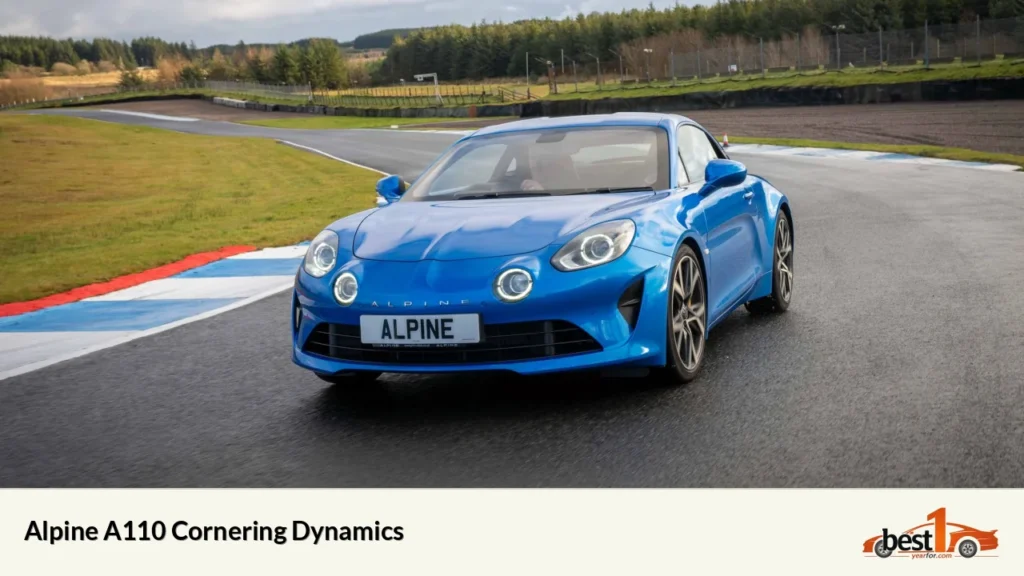
The Alpine A110 represents a modern interpretation of the classic French sports car, with handling at the forefront of its design philosophy. Its mid-engine layout and lightweight aluminum chassis create an ideal foundation for exceptional handling characteristics. Weighing just over 1,100 kg, the A110 is one of the lightest sports cars in its class, contributing to its remarkable agility and responsiveness.
Alpine's engineers have focused on creating a car that feels alive and communicative, with a suspension setup that offers both compliance and control. The double-wishbone suspension at all four corners allows for precise wheel control and excellent body control through corners. This setup, combined with the car's low center of gravity, results in a vehicle that changes direction with minimal body roll and maximum driver confidence.
The A110's steering is another highlight, offering quick responses and ample feedback. Unlike many modern sports cars that rely on electric power steering, the Alpine retains a hydraulic system, which many enthusiasts prefer for its more natural feel. This attention to driver engagement extends to the car's brake system, which provides strong stopping power and excellent pedal feel, allowing for precise modulation during high-performance driving.
McLaren 765LT: Supercar Handling Redefined
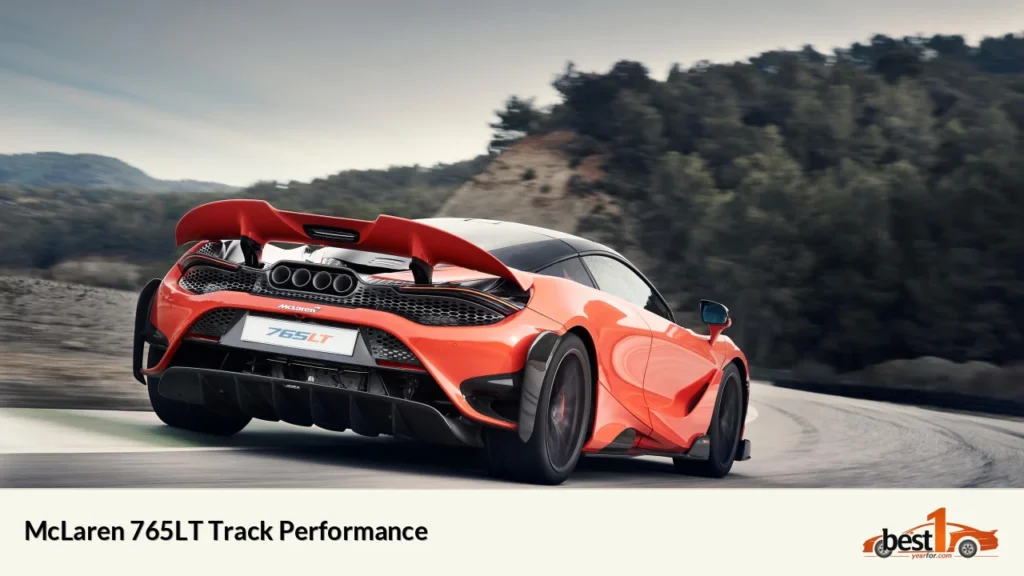
The McLaren 765LT represents the pinnacle of supercar handling, combining advanced aerodynamics, lightweight construction, and sophisticated suspension technology. As a track-focused variant of the already impressive 720S, the 765LT takes handling to new heights with its carbon fiber construction and optimized aerodynamics.
At the heart of the 765LT's handling prowess is McLaren's Proactive Chassis Control II system. This advanced suspension technology uses interconnected hydraulics and multiple sensors to continuously adjust damping rates, providing optimal body control and ride quality in various driving conditions. The system can adapt to different driving modes, allowing the car to transition from a comfortable grand tourer to a razor-sharp track weapon at the push of a button.
One of the standout features of the 765LT is its hydraulic steering system, which McLaren has retained despite the industry trend towards electric power steering. This decision results in unparalleled steering feel and feedback, allowing drivers to precisely place the car with confidence at high speeds. The car's carbon-ceramic brakes and specially developed Pirelli P Zero Trofeo R tires further enhance its handling capabilities, providing exceptional grip and stopping power.
BMW M3: The Ultimate Driving Machine
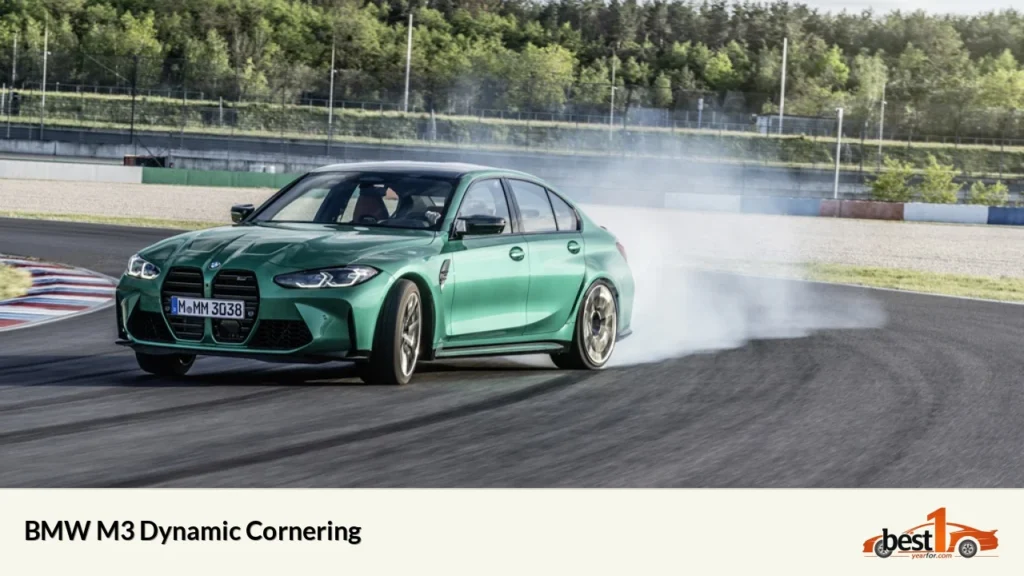
The BMW M3 has long been regarded as a benchmark for sports sedan handling, and the latest generation continues this tradition with aplomb. The M3's rear-wheel-drive layout (with optional all-wheel drive) provides a classic sports car feel, while its near-perfect weight distribution ensures balanced handling characteristics.
At the core of the M3's handling prowess is its adaptive M suspension system. This technology allows drivers to adjust the car's damping characteristics on the fly, tailoring the ride from comfortable to track-ready with the push of a button. The M3 also features an active M differential, which optimizes power distribution between the rear wheels for enhanced traction and stability during aggressive cornering.
The M3's steering system is another highlight, offering precise control and good feedback. While some purists may prefer the hydraulic systems of older generations, the current electric power steering setup is well-tuned and responsive. The car's rigid chassis and wide track contribute to its stability and grip, allowing drivers to push the limits with confidence.
Honda Civic Type R: Hot Hatch Handling Hero
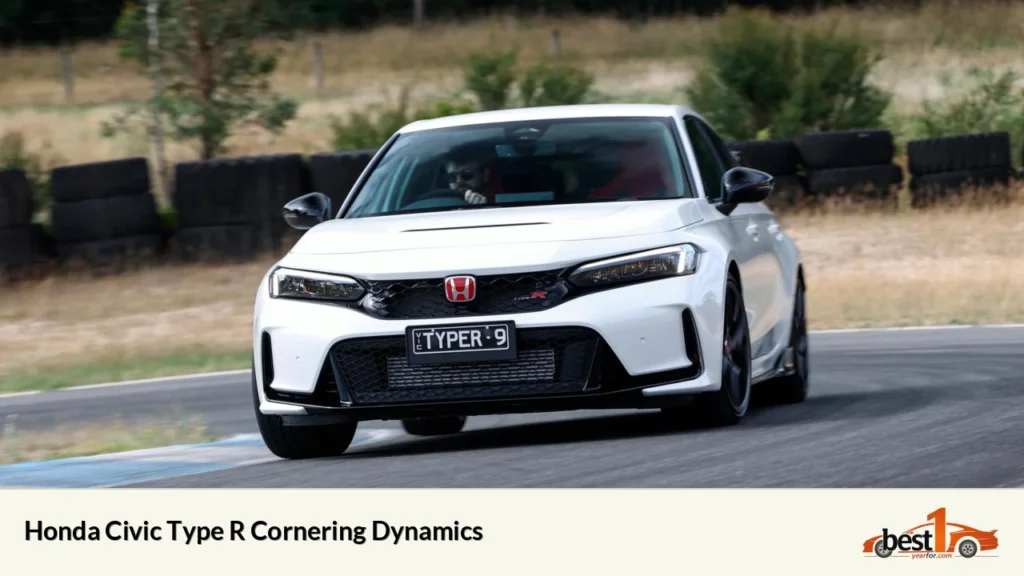
The Honda Civic Type R stands out as one of the best-handling front-wheel-drive cars ever produced. Its exceptional handling characteristics defy the typical limitations associated with front-wheel-drive layouts, offering a driving experience that rivals many rear-wheel-drive sports cars.
At the heart of the Type R's handling prowess is its advanced suspension system. The car features a dual-axis strut front suspension, which separates steering and suspension functions to reduce torque steer and improve steering feel. This is complemented by a multi-link rear suspension that provides excellent stability and control.
The Civic Type R also employs an adaptive damper system, allowing drivers to adjust the car's ride characteristics to suit different driving conditions. In its most aggressive setting, the suspension provides exceptional body control and responsiveness, making the car feel incredibly agile and planted through corners.
A helical limited-slip differential further enhances the Type R's handling, improving traction and reducing understeer during aggressive cornering. Combined with its aerodynamic design, which generates real downforce, the Civic Type R offers a level of handling and performance that belies its practical hatchback form.
Lotus Evora GT: Lightweight Precision
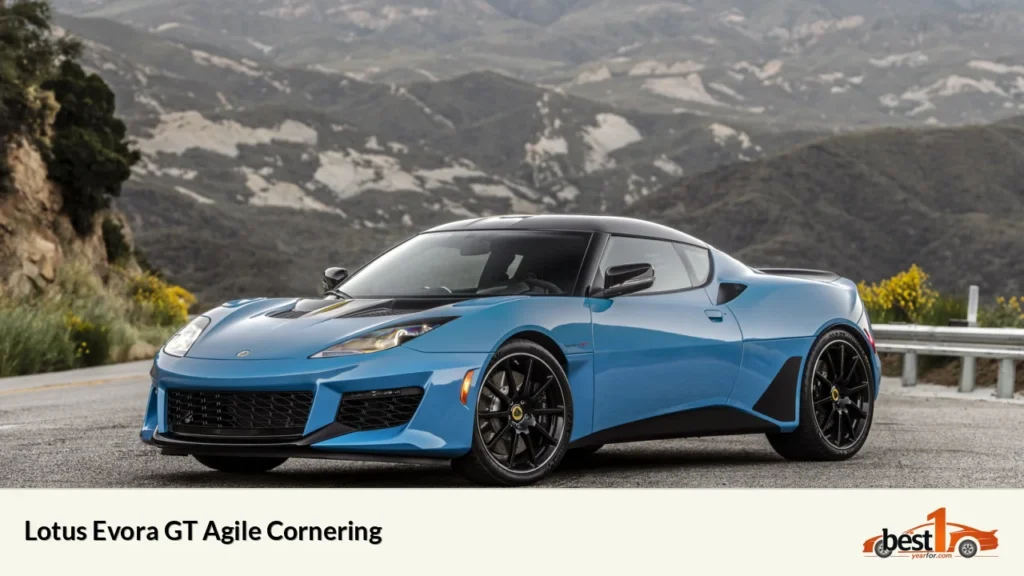
The Lotus Evora GT exemplifies the brand's philosophy of "simplify, then add lightness," resulting in a car with exceptional handling characteristics. Its mid-engine layout and lightweight construction provide an ideal foundation for precise and engaging driving dynamics.
The Evora GT's handling prowess stems from its advanced aluminum chassis, which offers exceptional rigidity while keeping weight to a minimum. This is complemented by a finely-tuned suspension system that strikes a balance between comfort and performance. The car's double-wishbone suspension at all four corners allows for precise wheel control and excellent feedback.
One of the standout features of the Evora GT is its hydraulic power steering system. In an era where many manufacturers have switched to electric power steering, Lotus has retained hydraulic assistance, resulting in steering that offers unparalleled feel and feedback. This allows drivers to precisely place the car through corners and feel every nuance of the road surface.
The Evora GT's relatively long wheelbase for a mid-engine sports car contributes to its stability, while its low center of gravity enhances agility. The result is a car that feels planted and confident at high speeds, yet nimble and responsive in tight corners.
Chevrolet Corvette Stingray: American Precision
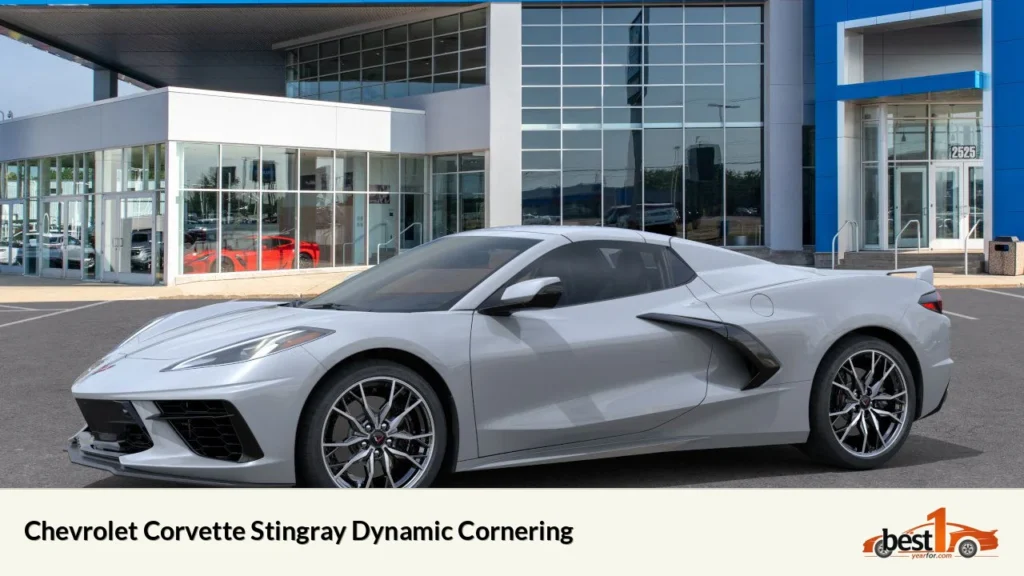
The latest generation Chevrolet Corvette Stingray marks a significant departure from its predecessors with its mid-engine layout, resulting in a car with handling characteristics that rival exotic supercars. This configuration allows for near-perfect weight distribution, enhancing the car's balance and responsiveness.
At the core of the Corvette's handling prowess is its sophisticated suspension system. The car features a short/long arm (SLA) double wishbone suspension at all four corners, which provides excellent wheel control and allows for precise tuning of handling characteristics. This is further enhanced by the available Magnetic Ride Control system, which uses magnetorheological dampers to continuously adjust suspension stiffness based on road conditions and driving style.
The Corvette's steering system is another highlight, offering quick responses and good feedback. The car's rigid aluminum structure contributes to its precise handling, allowing for minimal body flex during aggressive cornering. The mid-engine layout also improves the car's weight transfer characteristics under acceleration and braking, enhancing overall stability.
An electronic limited-slip differential helps optimize traction, particularly when exiting corners under power. Combined with the car's aerodynamic design, which includes active elements to enhance downforce, the Corvette Stingray offers a level of handling performance that belies its relatively accessible price point.
Audi RS3: All-Wheel Drive Agility

The Audi RS3 stands out in the compact performance car segment with its exceptional handling characteristics, largely thanks to its advanced all-wheel drive system. The latest iteration of Audi's quattro system in the RS3 features a torque-vectoring rear differential, which can send up to 100% of the available torque to either rear wheel.
This sophisticated all-wheel drive system allows the RS3 to overcome the typical understeer associated with front-heavy, all-wheel drive cars. Instead, it offers a more neutral handling balance, with the ability to induce controlled oversteer when desired. The system continuously adjusts power distribution based on driving conditions and driver inputs, enhancing both traction and agility.
The RS3's handling is further enhanced by its sport-tuned suspension, which provides excellent body control while maintaining a reasonable level of ride comfort. The car's progressive steering system offers quick responses and good feedback, allowing for precise control through corners.
Audi's Drive Select system allows drivers to adjust various vehicle parameters, including suspension stiffness, steering weight, and throttle response. This enables the RS3 to transition from a comfortable daily driver to a sharp-handling performance car at the push of a button.
Toyota GR86: Affordable Handling Excellence

The Toyota GR86 (and its Subaru BRZ twin) has earned a reputation for offering some of the best handling characteristics in its price range. This compact sports car is designed with a focus on driver engagement and balanced performance, making it a favorite among enthusiasts and a popular choice for amateur motorsports.
At the heart of the GR86's handling prowess is its lightweight construction and low center of gravity. The car's boxer engine sits low in the chassis, contributing to its excellent weight distribution and reducing body roll during cornering. The GR86's compact dimensions and relatively long wheelbase for its size provide a good balance between agility and stability.
The car's suspension setup, featuring MacPherson struts in the front and a double-wishbone arrangement in the rear, is tuned to provide responsive handling without sacrificing too much ride comfort. The electric power steering system is well-calibrated, offering good feedback and precise control.
One of the standout features of the GR86 is its predictable and controllable behavior at the limit. The car's balance and progressive handling characteristics make it an excellent platform for drivers to develop their skills and confidence behind the wheel. The GR86's rear-wheel-drive layout allows for easy manipulation of the car's balance through throttle inputs, making it an ideal choice for learning advanced driving techniques such as controlled drifts.
The GR86's limited-slip differential further enhances its handling capabilities, improving traction and allowing for smoother power delivery when exiting corners. This feature, combined with the car's responsive chassis, enables drivers to maintain control and maximize cornering speeds with confidence.
Despite its impressive performance, the GR86 remains an accessible and practical choice for everyday use. Its compliant ride quality and reasonable fuel efficiency make it a versatile sports car that can be enjoyed on both twisty back roads and daily commutes.
In conclusion, the Toyota GR86 exemplifies how a well-designed, lightweight sports car can offer exceptional handling characteristics without breaking the bank. Its combination of balanced chassis dynamics, responsive steering, and driver-focused engineering make it a standout choice for enthusiasts seeking an engaging and rewarding driving experience.
FAQs
- What makes a car handle well?
A well-handling car combines factors like balanced weight distribution, responsive steering, and a properly tuned suspension system. - Are expensive cars always better handling?
Not necessarily. While high-end cars often have advanced technologies, some affordable cars like the Mazda MX-5 Miata offer excellent handling. - Does engine placement affect a car's handling?
Yes, engine placement significantly influences weight distribution and balance, impacting overall handling characteristics. - Can handling be improved on a standard car?
Handling can be enhanced through upgrades like performance tires, suspension modifications, and chassis stiffening. - Why is lightweight construction important for handling?
Lighter cars are more agile, responsive, and easier to control, leading to better overall handling performance.







